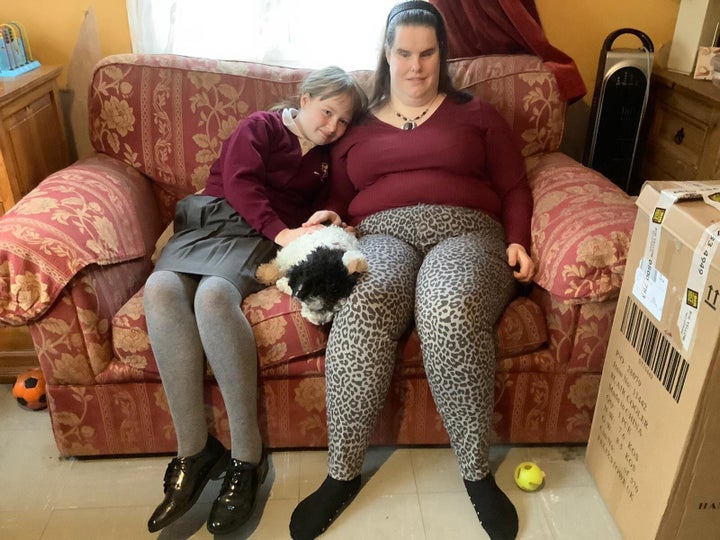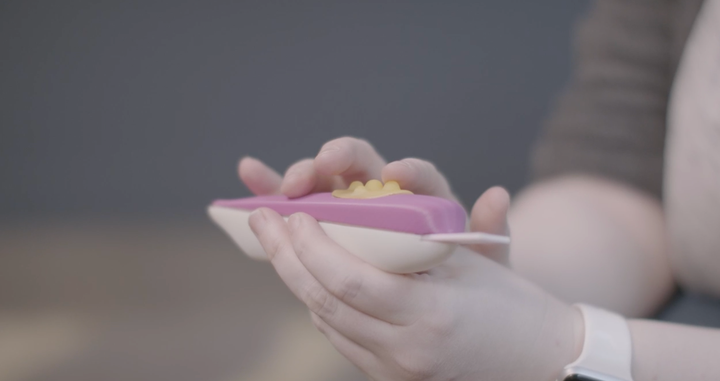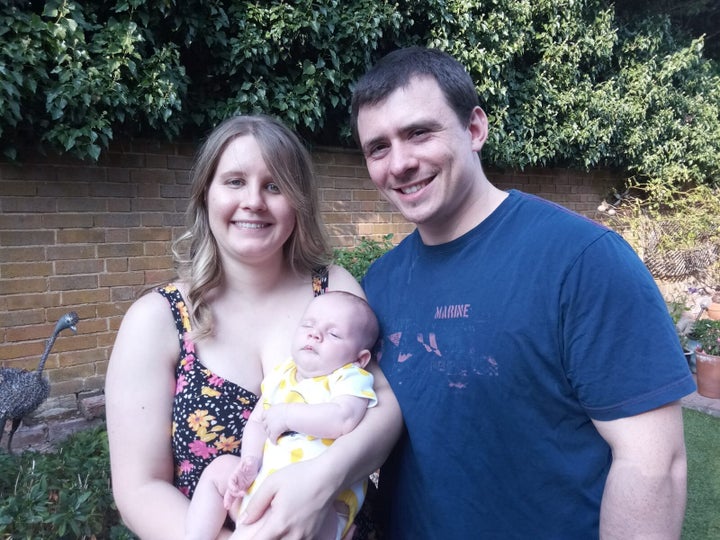Danielle Cleary was 22 when she thought she might be pregnant. She’s been blind her whole life due to retinopathy and her partner at the time also had a visual impairment, meaning the pair were unable to see the result of their pregnancy test.
Cleary, from Croydon, London, didn’t want to tell family and friends, so she resorted to asking her neighbour to read the test for her.
“To be in that situation and not to be able to find out what’s going on with your body before someone else does, is horrible,” she tells HuffPost UK. “It was negative and my neighbour said: ‘That’s probably for the best, isn’t it?’ I thought: ‘That really isn’t any of your concern.’”
At the age of 27, and by this time ready for a baby, Cleary realised her period was late again, and so she asked her mum to read the pregnancy test for her.
She gave birth to a baby girl, but her relationship ended two years later, and Cleary, now 36, is a single parent, living with her mum, best friend and eight-year-old daughter.
She says the stigma surrounding being a blind mum continues.

Cleary is sharing her story as part of a campaign by Royal National Institute of Blind People (RNIB), called Design For Everyone. The initiative aims to raise awareness of the importance of accessible design and information – and uses pregnancy tests as an example.
Every year, thousands of blind and partially sighted women have no choice but to rely on other people to read their pregnancy results, meaning their private news becomes public.
To prove that accessible tests are possible, RNIB has worked with designers to create the first prototype for a new, tactile test. The test uses the same technology as digital tests, but has a mechanical output, instead of a screen, with raised buds to communicate pregnancy.

Cleary describes the prototype test as “like gold” and says it would have made a real difference to her. But finding out if you’re pregnant is just the first hurdle for women with visual impairments.
Charlotte Makepeace, 25, from Leeds, gave birth to her son Rory in June. Makepeace has very little vision, so she had to rely on her husband to read her test results when they were trying for a baby.
Mothers across the country have faced disruptions to antenatal and midwife services during the pandemic and Makepeace says having a visual impairment made this even tougher, as she struggled to find information online.
“I have had a few extra face-to-face consultations because I needed that extra support, but there’s quite a lot of things that aren’t available,” she says.
“For example, I have a guide dog and they [trainers] haven’t been able to come out and do any training with me on walking with the guide dog and the baby together.”

Another challenge for Makepeace during pregnancy was balance. She struggles with spacial awareness anyway, but found this particularly tough towards the end of her pregnancy.
She says there’s a stigma attached to being pregnant if you’re visually impaired. “On the bus there were a couple of ladies talking behind me about how it must have been accidental,” she recalls. “I think a lot of people think you couldn’t possibly be choosing to start a family.”
Cleary agrees, saying that while close friends and family were supportive, she often felt there was an “elephant in the room” when she was pregnant and a new mum, with people wondering how she would be able to look after her daughter.
“People don’t ask that question directly, perhaps because they think it’s inappropriate. But I think if people asked that question in a sensitive way, it would actually be beneficial for their own knowledge, for the potential safety of the child and just to understand a bit more about visual impairment,” she says.
“My eyes don’t work, but I still know when my baby needs feeding or when my baby needs changing. Sure, there were a couple of times when I needed sighted assistance, but in actual fact, it doesn’t matter that I can’t see.”
Makepeace and Cleary also had very different experiences of attending scans, so they would like there to be more training for sonographers across the board, so all women have positive experiences.
Makepeace describes her first scan as “amazing” and says she was made to feel “incredibly involved”; the sonographer let her listen to her baby’s heartbeat and explained everything on the screen, giving her a detailed description of her son. But Cleary had to ask her sonographer to turn the sound on (it wasn’t done as standard at her hospital) and she was abruptly handed a picture at the end.
“Nobody said: ‘If you would like me to, I can take your hand and show you the outline of your baby’. Nobody offered that, so I had no idea what my daughter looked like,” she says.
The number of people with sight loss is estimated to rise to 2.7 million by 2030, according to RNIB and by the time we reach 75, one in five of us will be affected. This should be enough to make everyone passionate about accessibility issues, says Cleary.
“It’s very easy to skim past something and say ‘that doesn’t affect me’, but what you don’t realise it that it could,” she says. “It may not be you now, but it could be you in five years time, God forbid, or it could be your sister, your daughter, your niece.
“All I’m asking as a visually impaired person is to be afforded the same as you, I’m not asking to be treated differently, I’m asking to be treated the same. And I don’t think that’s very much to ask.”
The RNIB has a list of resources and an online guide to help visually impaired parents, which you can find on their website.